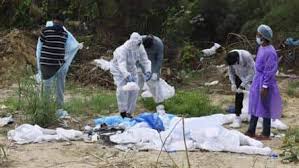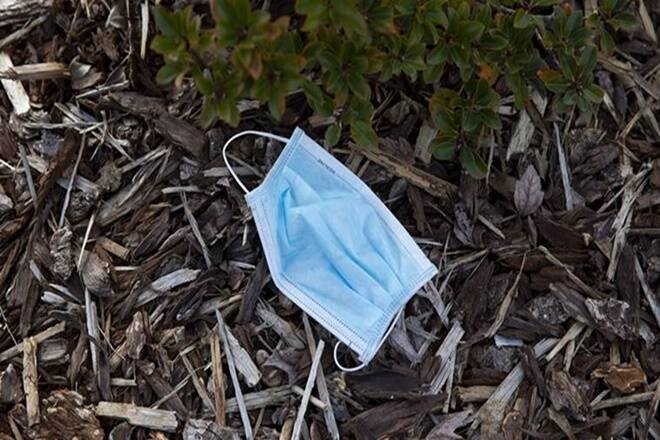Apart from the wide range of various difficulties set forward by SARS-CoV-2 or COVID-19, there is a need to deal with the various kinds of solid wastes, to be more specific Biomedical waste (BMW) rising out of various medical care offices, isolated homes, and centres, that is showing up in a gigantic amounts each day. The potential challenges facing this waste could be a source of community spread.
Biomedical waste is any waste containing irresistible (or possibly irresistible) materials. It might contain waste related to the generation of biomedical waste that outwardly has all the earmarks of clinical or laboratory origin. Health care units produce abundant amounts of biomedical waste; therefore, it is a significant contributor to the community’s spread of infection.
The COVID-19 pandemic and administrative approaches to contain the spread of infection have caused a worldwide recession and have produced a considerable measure of clinical waste. The consumption of PPEs (personal protective equipment) and single-use plastics during the pandemic increased the amount of clinical waste and has changed the average density of the clinical waste. The current quick flood in medical care waste because of the COVID-19 pandemic is fuelling the issue, and is a threat that the effects of unsafe disposal of medical services waste will gush out into a crisis of natural pollution. (Narendra Singh, 27 July 2020)
Much research on the diseases spread because of waste has been studied, which results that the virus can live on the surfaces of the material for a particular period, as shown in the table underneath.
| Surface | Survival Period |
| Plastic | 2-3 days |
| Hard, shiny and stainless steel | 2-3 days |
| Copper | <4 hours |
| Cardboard | <24 hours |
| Air | <3 hours |
Hence, it is a significant thought to be taken in an activity away, collection, taking care of, shipping, and discarding such waste adequately and effectively. The virus can be cleaned with the standard disinfectants utilised at home.

After the rollout of the novel Coronavirus diseases, it was found from original sources that the measure of biomedical waste has been expanded to 15 times more contrast with the measure of the waste created from the overall patients. According to the report distributed by Biotic, the area concessionaire for biomedical waste the board, about a significant city ‘Gurugram’ said that regarding 10% of the all-out waste created in the region originates from the relieving of the COVID-19. The area presently delivering 0.4 tons/day of COVID-19 identified with biomedical waste, against 0.38 tons/day of biomedical waste from other clinical administrations, from around 36 medical care offices, isolation wards, testing, and isolated centres or homes. Other than the spread of the virus through people, India is facing some challenging issues community spread through lack of knowledge in waste management which should be addressed immediately.
These challenges includes:
1- As the amount of domestic hazardous waste
(DHW), likewise incorporates gloves, masks are expanding altogether, there is an issue of the assortment of the waste independently.
2- No appropriate training is given to staff, sanitary workers to deal with the overall waste, produce during COVID-19
3- Irregular /absence of availability of PPEs and disinfectants to the collection staff may build the odds of them getting contaminated.
4- Wastewater releasing from the medical care offices may have the infection, in this manner administrators or staff utilised in the treatment plant of the wastewater may at the severe danger of disease
5- Particular vehicles for gathering the Coronavirus waste from homes/isolate focus to CBWTF (Common Bio-clinical Waste Treatment and Disposal Facility) and the plan of chemical substances to disinfectant these vehicles. If without disinfection these vehicles are used for collecting MSW (Municipal solid waste), there is a risk of virus spreading.
6- Towns and villages have no appropriate observing survey and check frameworks.
7- At certain places of the Nation, site conditions require the manual stacking or emptying of the waste and consequently increment the odds of the pollutions.
Undoubtedly, India isn’t in the situation to show any carelessness in dealing with and treating the waste well. There are many difficulties, however, with an appropriate method of taking care can lessen the danger. Likewise, central and state government needs to be strict while regulating infected waste management. The administration must give general strategies with rules dependent on sort of waste, and none ought to do without treatment following these techniques and rules given by the legislature. Awareness of proper segregation should be there by the government. The Waste Management team should accept no waste if it doesn’t follow the guidelines. Separation of the waste like masks and gloves which are utilised in homes too to be treated before it can hurt some other individuals. There is proper colour code for a different waste that must be strictly followed and must be discarded with proper treatment. (Mohsin Anwer, June 2020)
To know how individuals and organisations are helping in solving waste management problem caused due to COVID-19. Read: http://theearthview.in/bricks-2-0-the-recycle-man-of-india-binish-desais-latest-innovation-from-facemask-and-ppe-kits/
Written by: Vartika Prasad
Bibliography
Mohsin Anwer, M. F. (June 2020). Solid Waste Management in India Under COVID-19 Pandemic: Challenges and Solutions. International Journal of Engineering and Technical Research.
Narendra Singh, Y. T. (27 July 2020). COVID-19 waste management: Effective and successful measures in Wuhan, China. PubMed Central.


Enjoyed every bit of your post.Really looking forward to read more. Will read on…